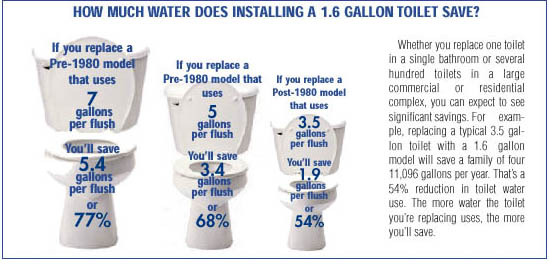
My first finance course has given me to power to make decisions based on facts. During the time of recession that we are in, many of us are doing home upgrades. To convince my husband to upgrade our toilets I've planned to impress him with this NPV calculation (he loves finance). When we make our choices, increasingly we are including green in the picture. What I have learned about finance has given me the synergistic power of quantifying a green decision. In finance you learn about Net Present Value or NPV. NPV gives you the power to make a financial decision based on the future cash flow. If NPV is positive you will make money and you choose the decision. If it is negative you do not pick it. We can apply this financial principle to carbon flow as well. What do I mean by carbon flow? I mean the carbon inflow and outflow required to produce and distribute any product or service.
When you consider any decision you should also consider not only the financial NPV but NPV of carbon flows or the life cycle analysis, LCA flows. Expressed in an equation total NPV = NPVfinancial + NPVcarbon. One example I will give you is, the decision to replace all the toilets in your house with water efficient toilets.
If we look at the LCA flow of the old and new toilets we have:
NPVLCA = benefit for years – cost in the first year
If this is positive we replace the toilet depending on the financial reasons
= increased water efficiency – (energy required to make the ceramic toilet + transportation of toilet)
It is assumed that ceramic would be an approximation for cement and that an average toilet weighs 75 pounds. Water savings would be 68%. The average household uses 238 gallons of water per day[6] or 87,000 a year. Savings would be 59,000 gallons of water. How much carbon or energy does it take to make 59,000 gallons? The amount of carbon saved is per 80,000 year. One question I have is what to use for the discount rate and over how many years? We can assume forever. The discount rate would be equal to the rate that carbon emissions are increasing each year, which is currently 2.5%[9], oddly enough approaching about the same rate of inflation.
Because carbon is the universal metric we convert all quantities back to NPVcarbon
NPVLCA = NPVcarbon = carbon factor H20 – carbon factor ceramic + carbon factor transportation
NPV(year 1)= 80,000 tons saved every year - [(1 t C/t cement)(0.034) + 3 ton C/ton gasoline]yr 1
= (80,000/0.025) – 3.034 = 2.4 million tons carbon
2.4 million tons of carbon can be saved by replacing one toilet that is more water efficient over the lifetime of the toilet.
The financial NPV is
NPVfinancial= benefit – cost
= savings on water bill forever– cost to replace toilet
= (25/0.03)-(500) = 833 – 500 = 333
If you saved $25 a year by changing the toilet the benefit outweighs the cost in NPV terms by $333.
Looking at the combined effect of financial and carbon flows, overwhelming the answer to replacing your toilet with a water efficient toilet is a resounding yes for greens all around.
One thing to note about this calculation is how easy the financial NPV is to calculate, but how much more complex a carbon NPV is to determine. Many assumptions and approximations might have to be made. What is powerful about this calculation is that the environmental effect of replacing one toilet has such a huge impact relative to the financial impact.
1. http://www.survivalinsight.com/reduce-water-bill-costs.html
2. http://answers.yahoo.com/question/index?qid=1006032214497
3. http://www.sciencedirect.com/science/article/B873D-4P9MYFN-BK/2/c58323fdf4cbc244856fe80c96447f44
4. http://www.ghgprotocol.org/downloads/calcs/co2-mobile.pdf
5. http://www.crd.bc.ca/water/conservation/household/indoorsavingtips.htm
6. http://www.greenbuildingsupply.com/Public/Energy-WaterConservation/WatersavingToilets/CaromaDualFlushToilet/index.cfm
7. http://www.epa.gov/waterinfrastructure/bettermanagement_energy.html#basicone
8. http://www.epa.gov/watersense/
9. http://www.sciencedaily.com/releases/2006/11/061130190831.htm
10. http://www.greenandsave.com/remodeling/bathrooms/water_efficient_toilets.html